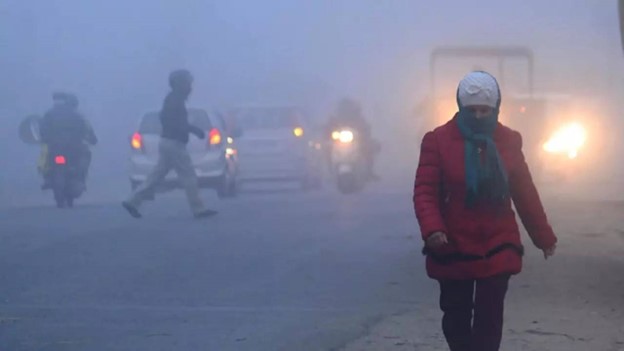India Meteorological Department (IMD) officials reported that Delhi experienced below-average maximum temperatures for the third consecutive day, attributing it to high-altitude fog and chilly northern winds on Tuesday.
The Safdarjung observatory, reflecting Delhi’s weather, registered a maximum temperature of 17.2°C, which is two degrees below the normal range. The minimum temperature recorded was 8.3°C.
As per IMD, the Lodhi Road weather station marked "cold day" conditions, noting a high of 16.2°C—4.8 degrees below normal—with a minimum temperature of 7.4°C.
IMD defines a “cold day” when the maximum temperature is at least 4.5 degrees below normal, accompanied by a minimum temperature below 10°C.
Although Mungeshpur (13.2°C) and Jafarpur (13.7°C) recorded even lower maximum temperatures, IMD clarified that these stations, being new automatic weather stations, lacked a defined "normal," hence not categorized as sites experiencing a cold day. Monday saw a slight improvement with a daytime temperature of 17°C, better than Sunday's seasonal low of 15.9°C.
IMD scientist Kuldeep Srivastava highlighted the persisting upper-level fog and less dense surface-level fog, affecting sunlight penetration despite better surface visibility. He mentioned Delhi's lowest visibility at around 500 meters.
The drop in minimum temperatures resulted from cold winds. December 15 marked the night temperature hitting 4.9°C, while it rose above 10°C in the last week of December.
IMD anticipates a gradual rise in daytime temperatures in the coming days due to reduced fog intensity. Srivastava predicts Safdarjung's maximum temperature gradually reaching 18-19°C as the dense fog layer weakens owing to decreased moisture.
While Delhi’s Indira Gandhi International (IGI) airport faced no flight disruptions, the Northern Railway reported over 26 train delays to and from Delhi on Tuesday morning.
Amidst the weather conditions, Delhi’s air quality remained in the “very poor” category on Tuesday, even after the Commission for Air Quality Management lifted severe category measures under the Graded Response Action Plan. The AQI stood at 340 (very poor), slightly better than Monday's 346 (very poor). The ban on certain vehicle types and private construction in NCR was lifted owing to gradual AQI improvements.
The Early Warning System forecasts Delhi’s AQI to persist in the "very poor" range until January 5, with a likelihood of remaining between "very poor" and "poor" over the next six days.






